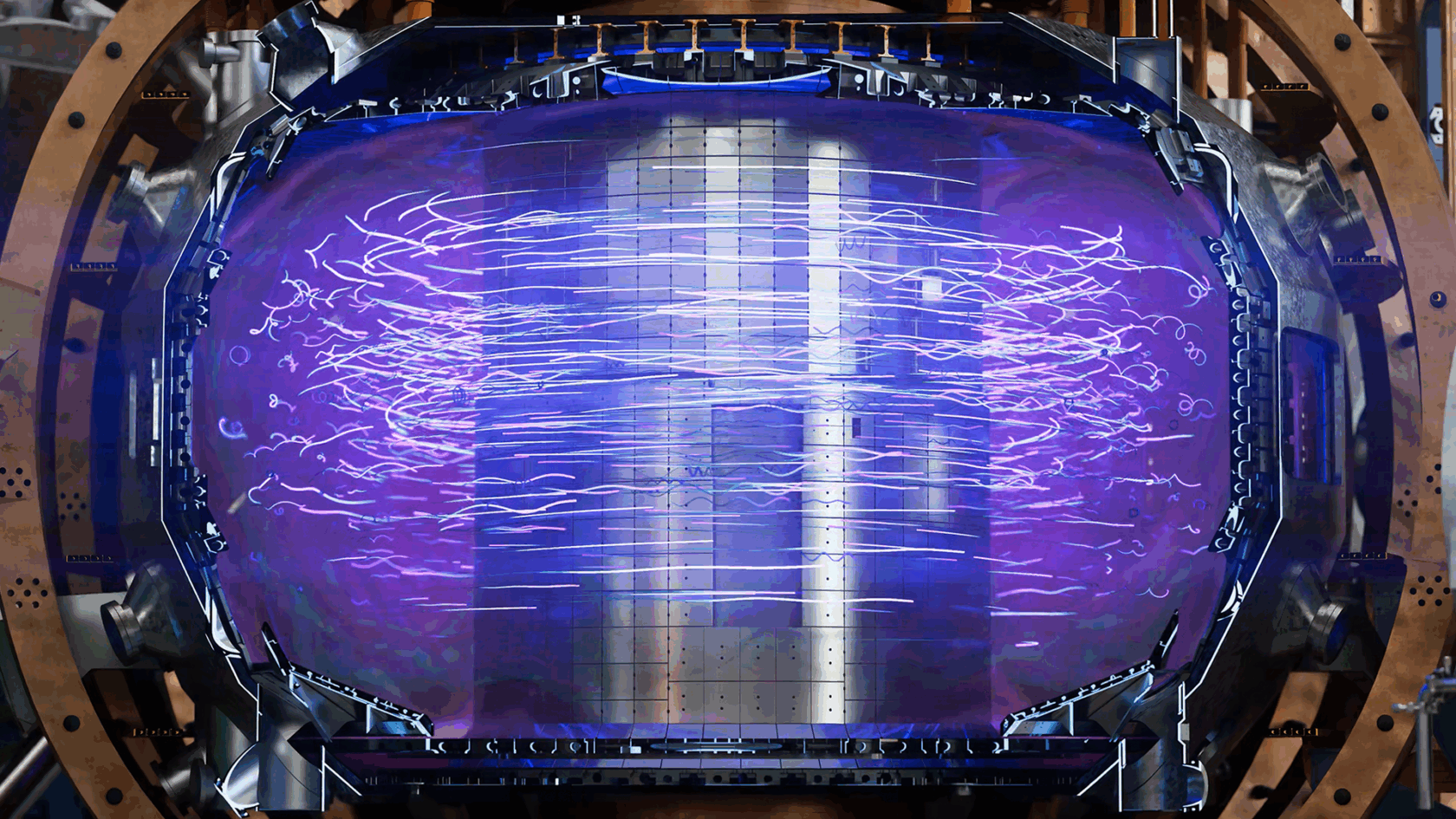World’s most powerful turbine blades to be tested to power 40,000 homes – Interesting Engineering

Report on the Advancement of Offshore Wind Technology and its Contribution to Sustainable Development Goals
Introduction: A Milestone in Renewable Energy Infrastructure
A significant development in the renewable energy sector has been recorded with the shipment of three 502-foot (153-meter) wind turbine blades from Yantai, China. This event marks a critical step in the development of the world’s most powerful offshore wind turbine and underscores a major contribution towards achieving the United Nations Sustainable Development Goals (SDGs), particularly SDG 7 (Affordable and Clean Energy) and SDG 13 (Climate Action).
Project Specifications and Technological Innovation
The project, led by Dongfang Electric Corporation, represents a leap in engineering and manufacturing capabilities, directly supporting SDG 9 (Industry, Innovation, and Infrastructure). The scale of the components is unprecedented and sets new industry benchmarks.
Key Technical Details
- Blade Length: 502 feet (153 meters)
- Blade Weight: 92 US tons (83.5 tonnes)
- Turbine Capacity: 26 megawatts (MW)
- Hub Height: 607 feet (185 meters)
- Rotor Diameter: 1,017 feet (310 meters)
Testing and Deployment
The blades have successfully completed static testing and are now proceeding to fatigue testing, the final evaluation phase before offshore installation. This rigorous process, adhering to international standards, ensures the resilience and reliability of the infrastructure, a core tenet of SDG 9.
Direct Impact on Sustainable Development Goals (SDGs)
This project is a clear manifestation of progress toward a sustainable future, with measurable impacts across several key SDGs.
SDG 7: Affordable and Clean Energy
The primary contribution of the 26 MW turbine is its capacity to expand access to clean and modern energy.
- Energy Generation: The turbine is projected to generate approximately 68 million kilowatt-hours (kWh) of clean electricity annually.
- Household Supply: This output is sufficient to power nearly 40,000 households, significantly increasing the share of renewable energy in the grid and contributing to energy security for communities, aligning with SDG 11 (Sustainable Cities and Communities).
SDG 13: Climate Action
By generating vast amounts of electricity without fossil fuels, the turbine is a powerful tool for climate change mitigation. The annual generation of 68 million kWh from a single installation represents a substantial reduction in greenhouse gas emissions, directly addressing the urgent need for climate action.
SDG 9: Industry, Innovation, and Infrastructure
The development showcases significant industrial innovation and the construction of sustainable infrastructure.
- Record-Breaking Scale: The 153-meter blades surpass the previous record of 147 meters, pushing the boundaries of manufacturing and materials science.
- Rapid Development: Dongfang Electric’s swift progress from platform development to component production highlights an accelerated innovation cycle within the green technology sector.
- Economic Growth: Such large-scale projects stimulate economic activity and create specialized jobs, contributing to SDG 8 (Decent Work and Economic Growth).
Strategic Advancements in Offshore Wind Technology
Dongfang Electric’s strategy extends beyond a single project, demonstrating a comprehensive approach to advancing offshore wind technology in line with global sustainability targets.
Parallel Developments
The company has also unveiled a 17 MW direct-drive floating wind turbine. This parallel development of both fixed-bottom and floating technologies demonstrates a versatile strategy to harness wind energy in various marine environments, crucial for the widespread adoption required to meet SDG 7 and SDG 13 targets.
Specifications of the 17 MW Floating Turbine
- Height: 498 feet (152 meters)
- Rotor Diameter: 859 feet (262 meters)
- Swept Area: 53,000 square meters
This portfolio of high-capacity turbines positions the company as a key driver in the global transition to renewable energy, building the resilient infrastructure necessary for a sustainable future.
Relevant Sustainable Development Goals (SDGs)
-
SDG 7: Affordable and Clean Energy
This goal is central to the article, which focuses on the development of the world’s most powerful offshore wind turbine. The entire project is about advancing clean energy technology to generate electricity from a renewable source. The article states the turbine is expected to “generate about 68 million kilowatt-hours (kWh) of clean electricity every year,” directly supporting the aim of providing affordable and clean energy.
-
SDG 9: Industry, Innovation, and Infrastructure
The article highlights significant advancements in engineering and technology. The creation of 502-foot blades and a 26-megawatt (MW) turbine is described as a “leap in wind energy tech.” This represents a major innovation (Target 9.5) and an upgrade to sustainable energy infrastructure (Target 9.4). The project involves building resilient infrastructure and promoting inclusive and sustainable industrialization by pushing the boundaries of the renewable energy industry.
-
SDG 13: Climate Action
By generating a massive amount of clean energy, the wind turbine project directly contributes to climate change mitigation. The article notes that the turbine’s output marks a “significant contribution to China’s renewable energy goals.” These national goals are a key component of a country’s strategy to take urgent action to combat climate change and its impacts, as called for by SDG 13.
Specific SDG Targets
-
Target 7.2: Increase substantially the share of renewable energy in the global energy mix.
The article directly addresses this target by describing a project that significantly increases the capacity for renewable energy generation. The development of a single 26 MW turbine capable of powering nearly 40,000 homes is a clear effort to increase the proportion of energy derived from renewable sources like wind.
-
Target 9.4: Upgrade infrastructure and retrofit industries to make them sustainable, with increased resource-use efficiency and greater adoption of clean and environmentally sound technologies.
The development of a more powerful and efficient wind turbine is a prime example of upgrading energy infrastructure with clean technology. The article details how Dongfang Electric Corporation is scaling up its technology to create “large-scale, high-capacity wind turbines,” which is a move towards more efficient and sustainable industrial practices in the energy sector.
-
Target 9.5: Enhance scientific research, upgrade the technological capabilities of industrial sectors… encouraging innovation.
The article is a showcase of technological advancement and innovation. It details how the new blades, at 502 feet, are set to break the previous record of 482 feet. The development of a 26 MW platform and a 17 MW floating turbine in a short time demonstrates a rapid enhancement of scientific research and technological capability within the offshore wind industry.
Implied Indicators for Measuring Progress
-
Installed capacity of renewable energy technology
The article explicitly states the power of the new turbine: “a 26-megawatt (MW) unit.” This is a direct indicator of the increase in renewable energy generation capacity.
-
Amount of clean electricity generated
The article provides a specific metric for the turbine’s output: “expected to generate about 68 million kilowatt-hours (kWh) of clean electricity every year.” This figure can be used to measure the direct contribution to renewable energy production and, by extension, the reduction in greenhouse gas emissions.
-
Scale of technological innovation
The physical dimensions of the technology serve as indicators of innovation. The article mentions the blade length (“502 feet (153 meters) long”), the rotor diameter (“exceed 1,017 feet (310 meters)”), and the hub height (“607 feet (185 meters)”), all of which are record-breaking figures that demonstrate progress in engineering.
-
Access to clean energy
An indicator for the societal impact is mentioned: the energy generated “could supply power to nearly 40,000 households annually.” This measures the progress in providing clean energy to the population.
SDGs, Targets, and Indicators Summary
| SDGs | Targets | Indicators |
|---|---|---|
| SDG 7: Affordable and Clean Energy | 7.2: By 2030, increase substantially the share of renewable energy in the global energy mix. |
|
| SDG 9: Industry, Innovation, and Infrastructure | 9.4: Upgrade infrastructure and adopt clean technologies.
9.5: Enhance scientific research and upgrade technological capabilities. |
|
| SDG 13: Climate Action | 13.2: Integrate climate change measures into national policies, strategies and planning. |
|
Source: interestingengineering.com

What is Your Reaction?
 Like
0
Like
0
 Dislike
0
Dislike
0
 Love
0
Love
0
 Funny
0
Funny
0
 Angry
0
Angry
0
 Sad
0
Sad
0
 Wow
0
Wow
0



























;Resize=805#)




















































